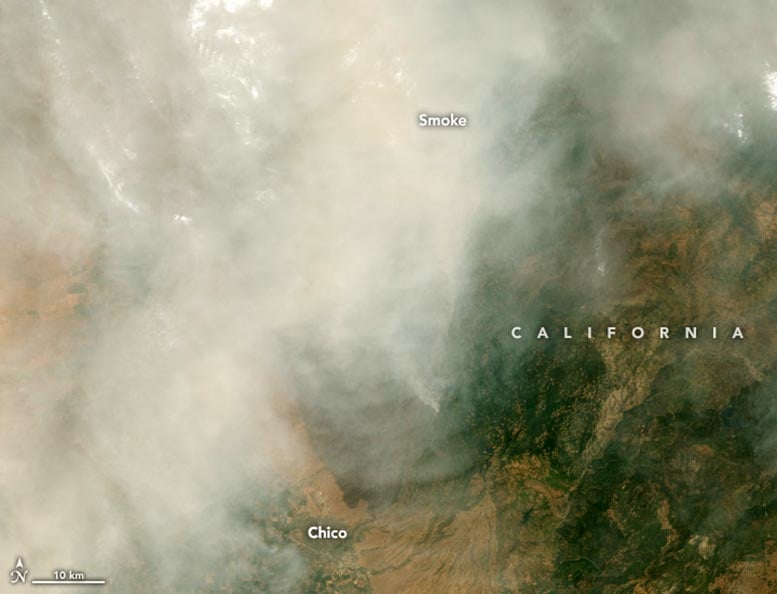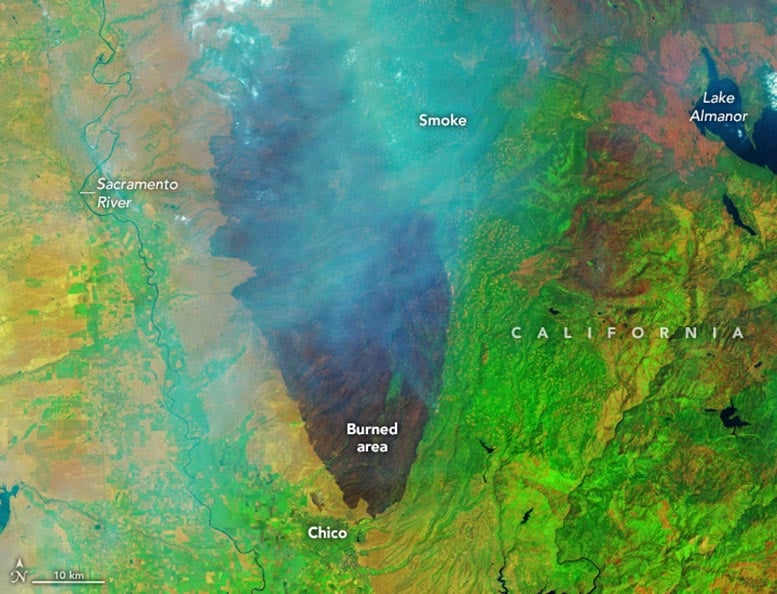
A natural-color satellite image of the Park Fire in Northern California taken on July 27, 2024, by Landsat 9’s Operational Land Imager-2.

A false-color satellite image of the Park Fire in Northern California taken by Landsat 9’s Operational Land Imager-2 on July 27, 2024.
The fires in Northern California spread with lightning speed amid record heat and strong winds, leaving vast areas burned.
The Park Fire in Northern California, due in part to record weather conditions, grew to 370,000 acres by late July 2024, making it the largest active fire in the United States and leading to mass evacuations and park closures despite containment efforts.
Park Fire Growth and Early Impact
In just a few days, the Park Fire in Northern California more than doubled in size in late July 2024. The fire quickly became the seventh largest wildfire on record in the state and, as of July 29, the largest active wildfire in the United States.
The Operational Land Imager-2 (OLI-2) on Landsat 9 captured images of the Park Fire on July 27. In the natural color scene (top), widespread smoke obscures most of the fire scars on the land below. Burned areas are evident in the false color image (bottom), which shows shortwave infrared, near infrared, and visible light (OLI bands 6-5-3). This band combination makes it easy to distinguish unburned vegetated areas (green) from recently burned terrain (brown). Areas with thicker smoke plumes appear in light blue.
Park Fire Spread and Remote Sensing Insights
The Park Fire began near Chico, California, at approximately 3 p.m. local time on July 24 and spread quickly, burning dry grass and brush. By the morning of July 26, it had burned 165,000 acres. By the time these images were taken the following day, the burn area had swelled to 307,000 acres, an area larger than the city of Los Angeles, according to Cal Fire. Record heat, high winds and a large amount of dry fuel contributed to the extreme fire behavior and rapid spread, experts told reporters.
Starting on the evening of July 27, temperatures began to drop, slowing the fire’s growth and allowing firefighters to begin battling it. Cal Fire reported that as of July 29, the fire had grown to approximately 370,000 acres and was 12% contained. The fire prompted evacuation orders in four counties and the closure of public lands, including Lassen Volcanic National Park.
The NASA Earth Observation satellite image was taken by Wanmei Liang using U.S. Geological Survey Landsat data.
